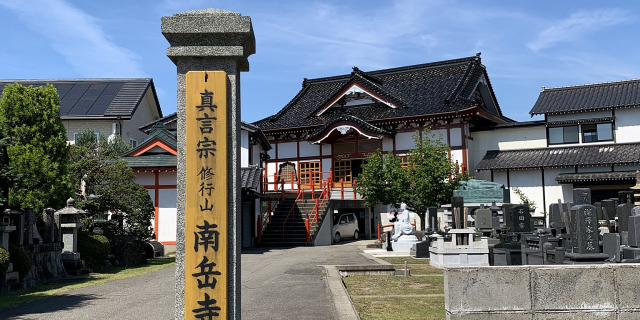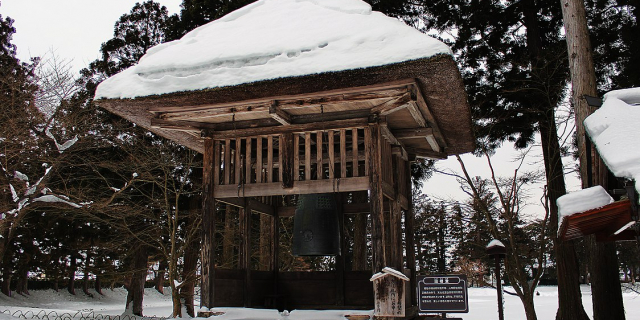立石寺
( Yama-dera )- You may also be looking for the voice actor Kōichi Yamadera.
Yama-dera (山寺, lit. "Mountain Temple"), (山号 宝珠山; Sangō Hōshu-zan) is about a twenty-minute train ride (Senzan Line) northeast of Yamagata City, in Yamagata Prefecture, Japan. The temple is a nationally designated Place of Scenic Beauty and Historic Site.
The area is named after the common name of the temple of Risshaku-ji (立石寺), founded in 860 AD by the priest Ennin (円仁) (AD 793 or 794–864), who is better known in Japan by his posthumous name, Jikaku Daishi (慈覺大師). In 847 he returned to Japan from China and in 854 he became the chief priest of the Tendai sect at Enryaku-ji. Risshaku-ji was founded as a branch temple of Enryaku-ji on Mt. Hiei near Kyoto. Even today the ritual fires brought from Enryaku-ji are still burning in the main temple. It developed into the major Heian-period (794–1185) temple for rural Dewa province (...Leer más
- You may also be looking for the voice actor Kōichi Yamadera.
Yama-dera (山寺, lit. "Mountain Temple"), (山号 宝珠山; Sangō Hōshu-zan) is about a twenty-minute train ride (Senzan Line) northeast of Yamagata City, in Yamagata Prefecture, Japan. The temple is a nationally designated Place of Scenic Beauty and Historic Site.
The area is named after the common name of the temple of Risshaku-ji (立石寺), founded in 860 AD by the priest Ennin (円仁) (AD 793 or 794–864), who is better known in Japan by his posthumous name, Jikaku Daishi (慈覺大師). In 847 he returned to Japan from China and in 854 he became the chief priest of the Tendai sect at Enryaku-ji. Risshaku-ji was founded as a branch temple of Enryaku-ji on Mt. Hiei near Kyoto. Even today the ritual fires brought from Enryaku-ji are still burning in the main temple. It developed into the major Heian-period (794–1185) temple for rural Dewa province (now Yamagata and Akita prefectures). This main temple, the Konpon-chūdō, an important cultural asset, is said to have been built in 1356 by Shiba Kaneyori, lord of Yamagata Castle. Most of Risshaku-ji was destroyed during the local wars of the early 16th century. It was rebuilt in 1543 under the monk Enkai. By the Edo period (1600–1868) Risshaku-ji was a powerful institution possessing a fief of 1,420 koku.
The present Konpon-chūdō (Main Hall) is a Muromachi period (1333–1568) construction of beech, which is rare as a building material. The temples clinging to the steep rocky hillsides are picturesque and unusual. The thousand step climb through the dense cedar trees is worth making to the temples at the top and for the view from them. The principal image of the main temple is the Heian-period seated wooden image of Yakushi Nyorai (the Buddha Bhaisajyaguru), an important cultural asset. Yamadera holds many other important cultural assets in its treasure house, the Hihokan, including standing wooden images of Shaka Nyorai, Yakushi Nyorai and Amida Nyorai, a seated wooden image of Dengyo Daishi, a hanging wooden mandala of Buddha, and a stone monument of the Nyohō-kyō Sutra from 1144.
Yama-dera is where the well-known haiku poet Matsuo Bashō wrote his famous haiku "ah this silence / sinking into the rocks / voice of cicada" in 1689. A museum of Basho's writings and paintings and other related art, the Yamadera Basho Memorial Museum, is a short walk up the hill on the opposite side of the steep valley. In 1996, the Ministry of the Environment selected the cicadas of Yama-dera as one of the 100 Soundscapes of Japan.































Añadir nuevo comentario